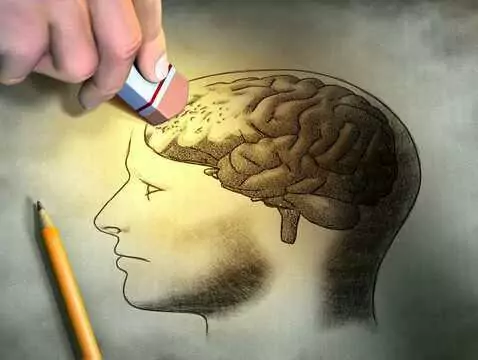For many years, the main emphasis was on short-term treatment of BPAD, focusing on the current episode of the illness. Today, the mainstay of BPAD therapy is long-term maintenance treatment.
Bipolar affective disorder (BPAD) is a chronic, relapsing disorder, a cause of decreased quality of life, suicidal behaviour and decreased productivity. For many years, the main focus was on short-term treatment of BPAD, focusing on the current episode of the illness. Today, the mainstay of BPAD treatment is long-term maintenance treatment. This is carried out with medications that are designed not only to prevent relapse, but also to improve patients' social functioning and enable them to return to work. The low number of side effects accompanying therapy promotes good cooperation between patient and doctor. This makes it possible to achieve remission, understood as a return of the patient to pre-disease levels of functioning, despite the complex nature of BPAD.
Assumptions for long-term therapy
Long-term treatment - long-term cooperation
BPAD is a lifelong disease. Nine out of ten patients experience recurrent manic episodes, variously interspersed with depressive episodes. The number of relapses increases with age. The available information also shows that the effectiveness of lithium therapy (but not valproic acid derivatives) decreases with successive BPAD episodes. Therefore, a good cooperation between patient and doctor, resulting in an understanding of the disease and conscientious medication intake, is so important.
Cooperation is made more difficult by the side effects accompanying treatment. The mainstay drugs of BPAD therapy - lithium and valproic acid derivatives - are effective in helping, but not without some side effects, and their intake requires regular medical follow-up. The severity of side effects increases with the serum concentration of each of these drugs.
Another reason for poor co-operation may be denial of the disease. Some patients do not acknowledge the chronic nature of their disease and, at the first, often rapidly passing, improvement, discontinue treatment without seeing the need to continue. Meeting regularly with the patient and listening to their position helps to get through the period of denial without interrupting treatment. It is also worth remembering to cooperate with the patient's family - a family that is aware of the nature of the illness and actively involved in the treatment process can be a valuable support for both patient and doctor.
Recognising "signalling events"
"Signalling events" are those events or behaviours whose occurrence signals the approach of a relapse or, conversely, recovery. For example, insomnia or increased irritability may herald a relapse of mania. Conversely, a resurgence of interests in a patient being treated for depression may signal that he or she is entering a phase of recovery. The ability to recognise such events provides the opportunity to quickly modify treatment and adapt it to the patient's current needs.
Family involvement
Family members and others close to the patient should be involved in the treatment process and attend at least some of the meetings. Of course, the effects of such a strategy can sometimes be quite counterproductive - family involvement can be a source of additional stress for the patient, and may be perceived by adult patients as interference with their autonomy. However, the benefits of family involvement far outweigh the disadvantages. A family that understands BPAD can usually catch the early harbingers of relapse (such as overconfidence or a provocative manner of dressing), which are often difficult to spot during medical appointments. A quick response by the doctor to the family's worrying accounts can protect the patient from escalation of the disease.
Maintenance treatment
The basis of BPAD maintenance treatment is to recognise the chronic nature of the disease and to focus on it as a whole, rather than on its individual episodes. It is important to realise that even in remission, between episodes of the disease, patients experience some mild symptoms. The aim of therapy is to keep the severity of these symptoms as low as possible, subthreshold, and to intervene as early as possible if there is a risk of relapse. Skilfully managed maintenance treatment significantly improves patients' quality of life and facilitates their functioning in society.
Recognising risk factors for relapse
Recognising risk factors for recurrence, especially those whose occurrence or course can be influenced, is an extremely valuable skill.
Diseases
Some diseases, such as AIDS, can increase the risk of mania. Listed below are those illnesses that may accelerate the onset of an episode of mania in people with BPAD. These should be treated in parallel with BPAD. Good cooperation with the GP is very important here.
- stroke;
- post-traumatic brain injury;
- multiple sclerosis
- epilepsy;
- HIV;
- AIDS;
- systemic lupus
- wilson's disease;
- hyperthyroidism;
- vitamin B12 deficiency;
- cushing's disease;
- herpes virus infections;
- uremia;
- sleep deprivation.
Substances
The following substances may increase the risk of a mania episode in patients with BPAD:
- alcohol;
- bronchodilators;
- caffeine;
- cocaine;
- stimulants;
- steroids;
- antidepressants, especially tricyclics;
- hallucinogenic substances;
- interferon;
- dopamine agonists;
- pseudoephedrine.
Psychoactive substances significantly destabilise the mood of BPAD patients. It is therefore necessary to provide patients and their relatives with reliable information on the effects of abuse, especially as this problem affects a large proportion of people with BPAD. If necessary, BPAD and addiction should be treated concurrently.
Sleep
Continued sleep deprivation over several days can put one in a state of pleasurable hypomania. This is why some BPAD patients use 'sleep deprivation' in an attempt to manage depressive symptoms. However, one has to be careful - disrupting the sleep-wake rhythm can become a cause of relapse. Shift workers and women in the last trimester of pregnancy and in the first months after childbirth are at particular risk.
Stress
BPAD patients are extremely sensitive to the mood-destabilising effects of stress. Research suggests that stress activates the autonomic system and disrupts the functioning of the hypothalamic-pituitary-adrenal axis. It is most likely these processes that sensitise BPAD patients to the onset of a mania episode.
Exposure to light
Also, excessive exposure to natural light predisposes a BPAD patient to the occurrence of an episode of mania. Therefore, episodes of mania are more common in summer and episodes of depression in autumn. It is likely that overexposure to artificial light and time zone changes during travel also entail some risk. It is still unclear what the sensitivity to these factors is due to - a disruption of sleep and wakefulness rhythms, or perhaps a dysregulation of melatonin and serotonin?









